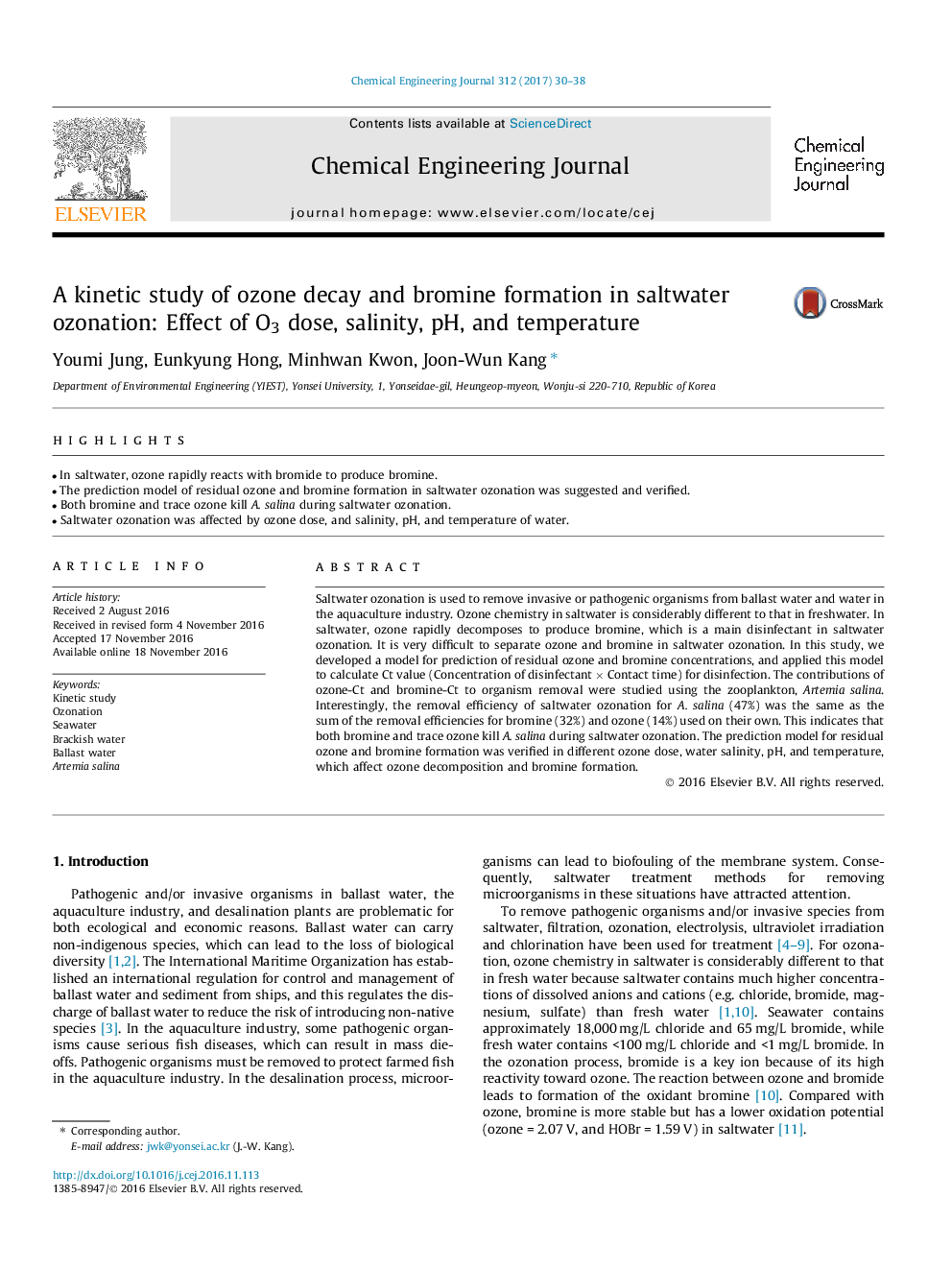| کد مقاله | کد نشریه | سال انتشار | مقاله انگلیسی | نسخه تمام متن |
|---|---|---|---|---|
| 6466433 | 1422966 | 2017 | 9 صفحه PDF | دانلود رایگان |

- In saltwater, ozone rapidly reacts with bromide to produce bromine.
- The prediction model of residual ozone and bromine formation in saltwater ozonation was suggested and verified.
- Both bromine and trace ozone kill A. salina during saltwater ozonation.
- Saltwater ozonation was affected by ozone dose, and salinity, pH, and temperature of water.
Saltwater ozonation is used to remove invasive or pathogenic organisms from ballast water and water in the aquaculture industry. Ozone chemistry in saltwater is considerably different to that in freshwater. In saltwater, ozone rapidly decomposes to produce bromine, which is a main disinfectant in saltwater ozonation. It is very difficult to separate ozone and bromine in saltwater ozonation. In this study, we developed a model for prediction of residual ozone and bromine concentrations, and applied this model to calculate Ct value (Concentration of disinfectant Ã Contact time) for disinfection. The contributions of ozone-Ct and bromine-Ct to organism removal were studied using the zooplankton, Artemia salina. Interestingly, the removal efficiency of saltwater ozonation for A. salina (47%) was the same as the sum of the removal efficiencies for bromine (32%) and ozone (14%) used on their own. This indicates that both bromine and trace ozone kill A. salina during saltwater ozonation. The prediction model for residual ozone and bromine formation was verified in different ozone dose, water salinity, pH, and temperature, which affect ozone decomposition and bromine formation.
Journal: Chemical Engineering Journal - Volume 312, 15 March 2017, Pages 30-38